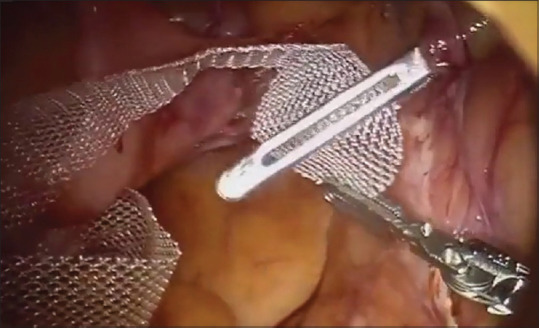机器人侧盆腔器官脱垂多室阴道脱垂悬吊。
IF 1.4
Q3 OBSTETRICS & GYNECOLOGY
引用次数: 2
摘要
本文章由计算机程序翻译,如有差异,请以英文原文为准。


Robotic Lateral Pelvic Organ Prolapse Suspension of Multicompartment Vaginal Prolapse.
InteRventIons The procedure uses a titanized propylene prosthesis shaped in T that gives it maneuverability and elasticity proper to native tissues. The positioning technique involves a first phase of removing peritoneum from the vaginal dome and then the disconnect of the vescicovaginal band to delimit the mesh anchoring plans. The lateral trajectory of it consists to insert in a retrograde manner the side arm of the prothesis in the context of the lateral abdominal wall with a posterior projection to the anterior-upper iliac crest in a space which is free of major complications [Figures 1 and 2]. Procedure started with dissection of the cervicovesical pouch. The vesicovaginal space was then identified between the bladder and the anterior vaginal wall. A mesh (Endolas® 41.5 cm × 5 cm × 15 cm) with two lateral arms was tailored and fixed to the vagina, by six sutures of 2-0 polyglactin 910. The
求助全文
通过发布文献求助,成功后即可免费获取论文全文。
去求助
来源期刊

Gynecology and Minimally Invasive Therapy-GMIT
OBSTETRICS & GYNECOLOGY-
CiteScore
2.00
自引率
16.70%
发文量
98
审稿时长
52 weeks
 求助内容:
求助内容: 应助结果提醒方式:
应助结果提醒方式:


